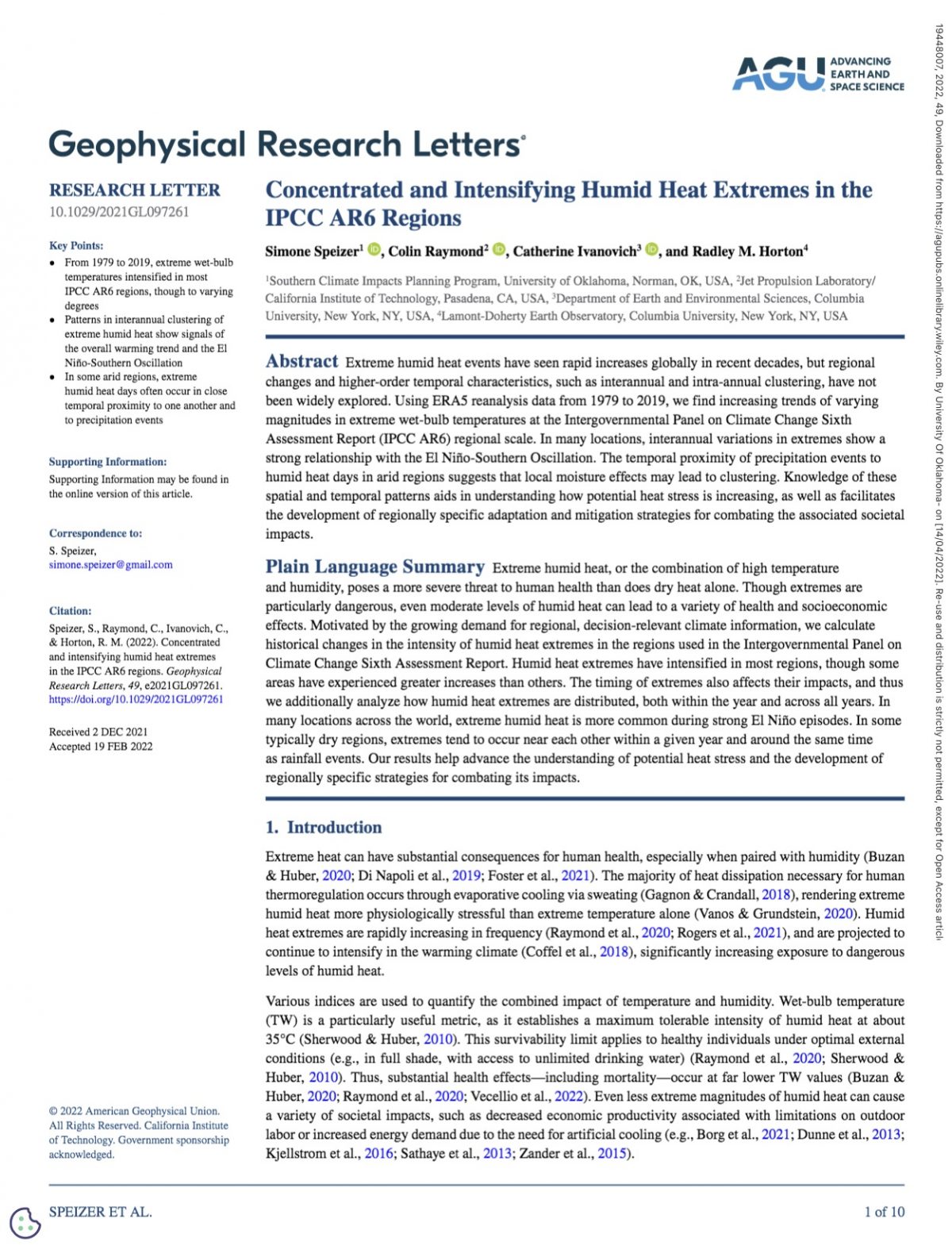Simone Speizer, former Research Associate with the Southern Climate Impacts Planning Program, recently published a study in the journal Geophysical Research Letters that explored the trends in “humid heat” across the globe. Instead of simply looking at temperature, Speizer also took into account moisture in the air using the wet-bulb temperature, a method that more accurately assesses the human health effects of heat.
The study examined changes in extreme wet-bulb temperatures at a regional level, using the regions from the most recent IPCC AR6 report. Extreme wet-bulb temperatures were found to have increased in most land regions over the period of 1979-2019, with some areas warming slower or faster than the average. The authors also analyzed the distribution of extreme humid heat days across and within years. On a yearly level, they observed a concentration of extreme wet-bulb temperatures in years with strong El Niño episodes. On a seasonal level, they found that some typically dry regions tend to have extreme humid heat days in close temporal proximity to each other and to rainfall events.
The socio-economic impacts of these changes and patterns were not examined in this study, but Speizer offers this avenue of study as potential future work.
Since our bodies are less capable (or even incapable if a certain temperature is reached) of evapotranspiration in humid heat, extremes can cause serious health effects in humans, and thus it is important to understand the mechanical drivers of such events as well as their temporal patterns. This way, we are better able to prepare for and mitigate the effects of extremes in humid heat, especially as they become more severe.
To read the full publication, click here.

